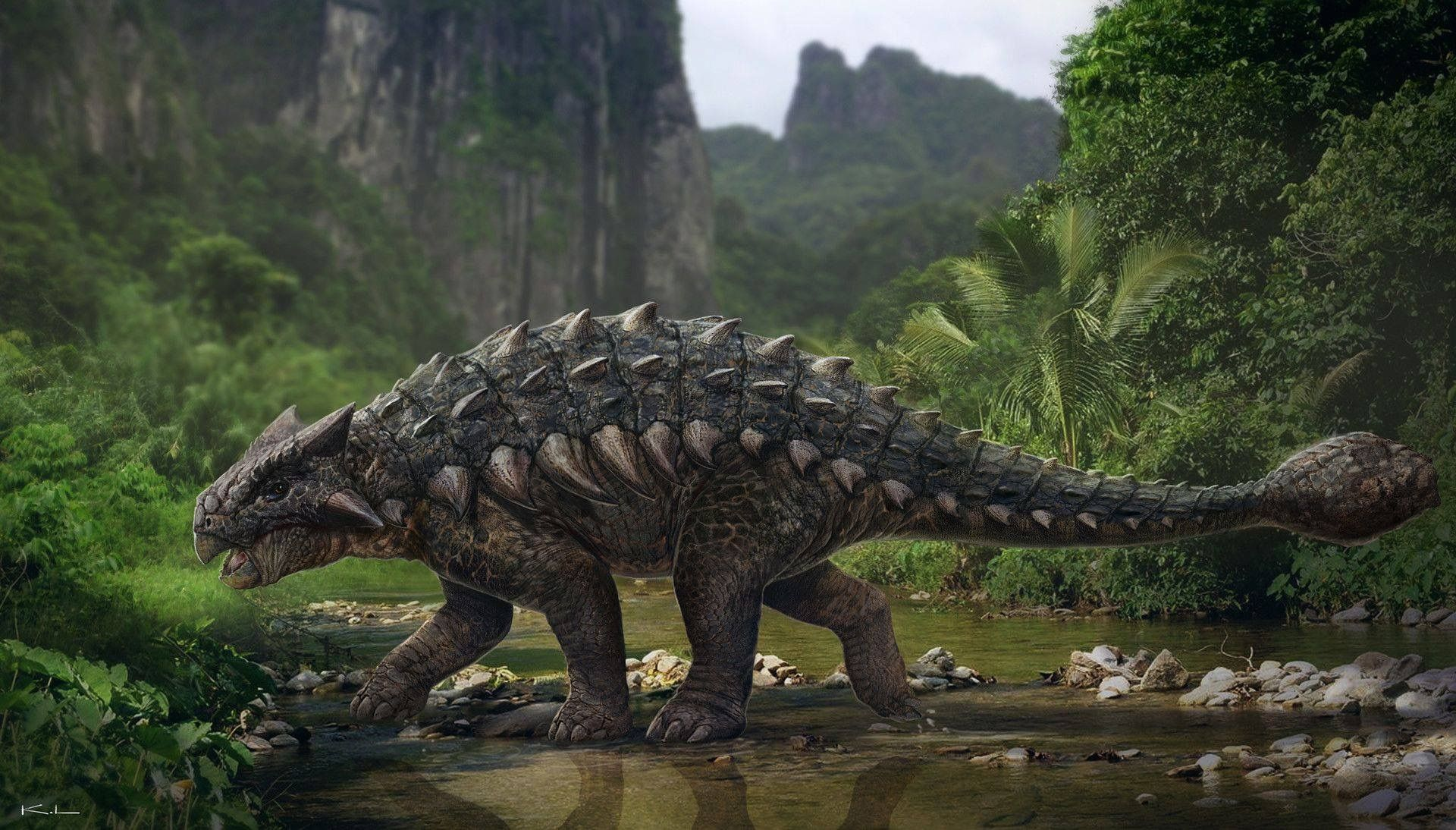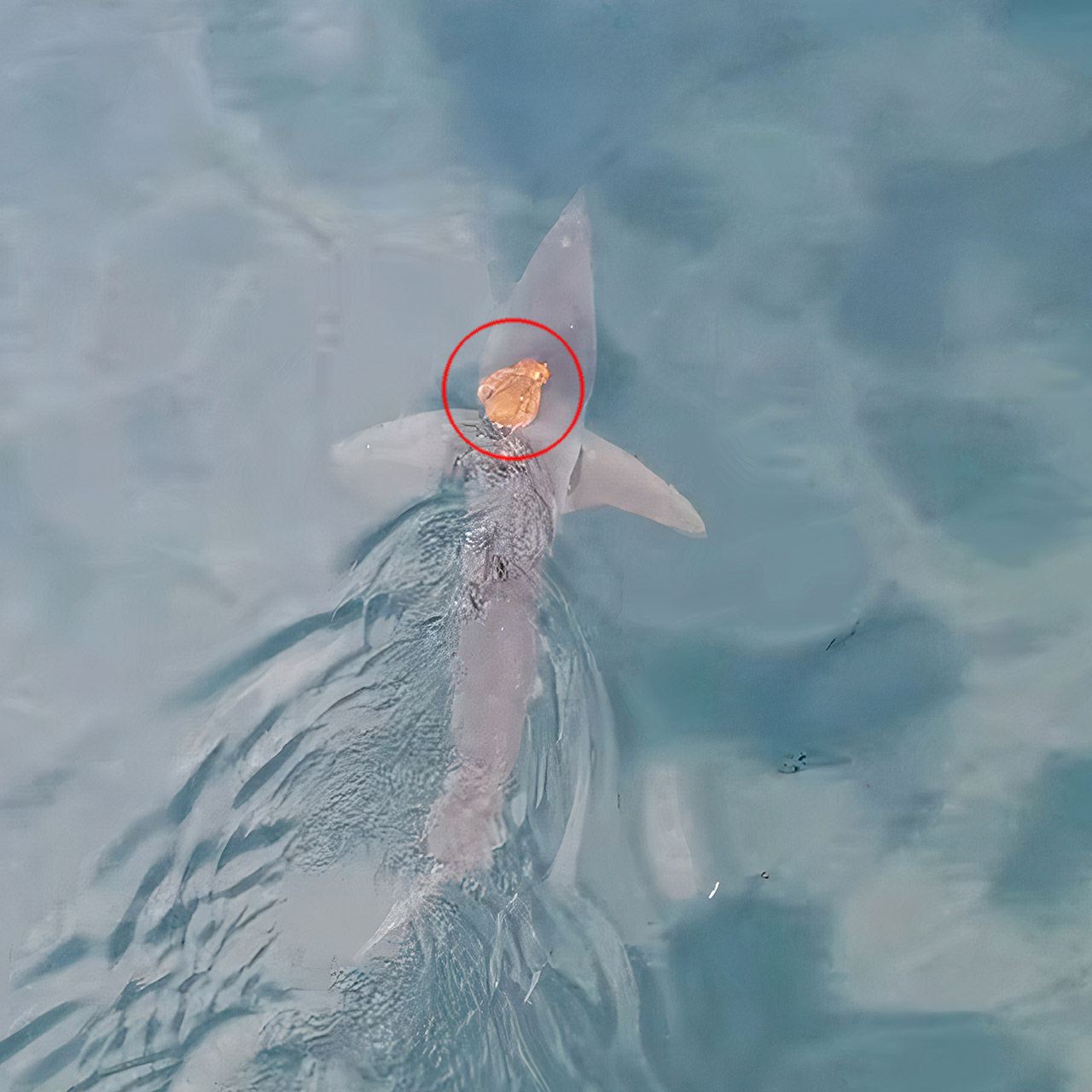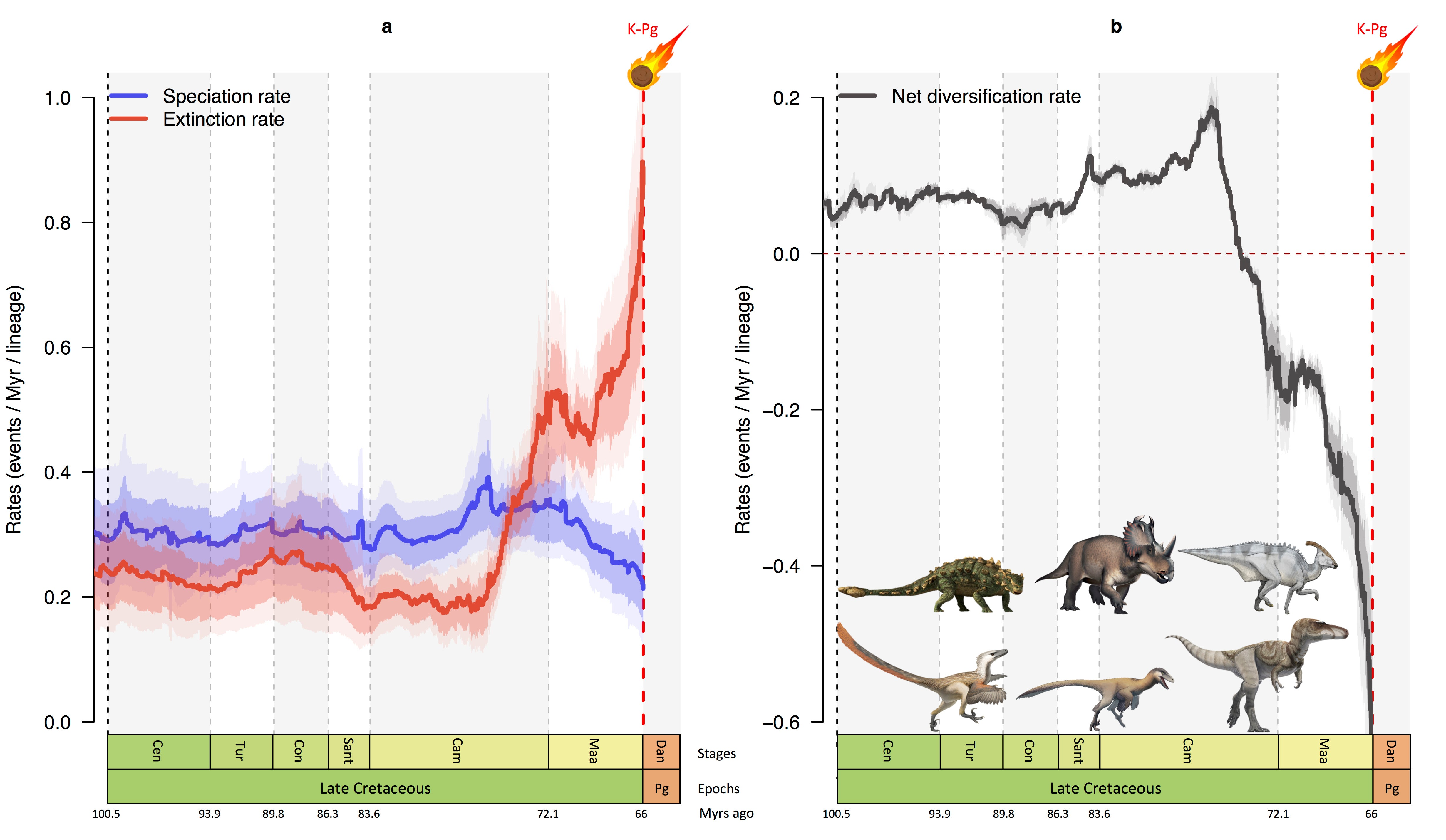Ankylosaurs, often likened to armored tanks of the dinosaur world, roamed the Earth during the Cretaceous period, a time when magnificent creatures dominated the landscape. These remarkable dinosaurs, characterized by their bony plates and club-like tails, are a prime example of dinosaur evolution that has fascinated paleontologists and enthusiasts alike. Recent discoveries, including the fossil footprints of a newly identified species named Ruopodosaurus clava, have shed light on the life and environment of these creatures during the Middle Cretaceous. The 100-million-year-old tracks found in Canada’s Peace Region underline the significance of ankylosaurs in understanding the ecological dynamics of Cretaceous period dinosaurs. As research continues, each new find enriches our knowledge of ankylosaurs and their place in prehistoric history, filling crucial gaps in our understanding of their existence.
Armored dinosaurs known as ankylosaurs represent an extraordinary lineage that thrived in prehistoric ecosystems. These beasts, with their unique adaptations, provide insight into the evolutionary strategies that defined their survival during the late Jurassic and Cretaceous epochs. Groundbreaking research has unveiled fossilized footprints from a new species, Ruopodosaurus clava, which demystifies earlier assumptions about the variety of ankylosaurids in North America. The discovery of these ancient tracks not only enriches the narrative of dinosaur evolution but also highlights the rich geological heritage of regions like Canada’s Peace Area. Understanding the life of these formidable creatures allows scientists to piece together the broader picture of dinosaur diversity and their environmental interactions.
Ankylosaurs: The Armored Dinosaurs of the Cretaceous
Ankylosaurs, often referred to as the “walking tanks” of the dinosaur world, lived during both the Late Jurassic and Cretaceous periods. Their distinctive bony armor made them visually striking and provided formidable protection against predators. Within this group, ankylosaurids and nodosaurids represent two critical subgroups; the former boasted clubbed tails, which likely served as a defensive weapon, while the latter had more traditional body structures without tail clubs. Their adaptations exemplify an evolutionary response to predation pressures that characterized the era.
Recent discoveries, particularly the findings of Ruopodosaurus clava, have shed light on the evolutionary progression of ankylosaurs during the Cretaceous period. The detailed study of fossilized footprints, including both four-toed and the recently uncovered three-toed variations, illustrates the diverse morphology and behavior of these fascinating creatures. As paleontologists continue to explore the remains and evidence left behind, the richness of ankylosaur discoveries contributes significantly to our understanding of dinosaur evolution.
The Exciting Discovery of Ruopodosaurus Clava
The discovery of Ruopodosaurus clava marks a pivotal moment in paleontological research, especially concerning ankylosaurs in North America. Found in Canada’s Peace Region, the fossilized footprints range from 100 to 94 million years ago, challenging previous assumptions that ankylosaurids may not have existed in this area during the middle of the Cretaceous period. This discovery fills a crucial gap in the fossil record and expands our understanding of dinosaur biodiversity in this region and era.
The implications of identifying Ruopodosaurus extend beyond mere taxonomy; it showcases the intricate relationships between various dinosaur species, including nodosaurids and ankylosaurids coexisting in the same geographic region. Victoria Arbour’s insights underscore the importance of the Peace Region for studying dinosaur evolution, hinting at the potential of uncovering more exciting findings as research progresses. Each footprint tells a story of ancient life, further enhancing our understanding of how these magnificent creatures adapted and thrived millions of years ago.
Ankylosaur Evolution and Fossil Footprints in North America: A Closer Look
The evolution of ankylosaurs is a fascinating story, marked by their adaptation to life in the diverse environments of the Cretaceous period. These dinosaurs evolved protective features, like heavy armor and tail clubs, that reflected the pressures of their ecosystems. Fossil footprints discovered in North America, including the significant finds of Ruopodosaurus clava, provide invaluable evidence about their behavior, locomotion, and interactions within their habitats. The cultural and ecological significance of these discoveries enhances our knowledge of ankylosaurs’ adaptation strategies.
Moreover, the study of fossilized footprints opens avenues for further investigation into ankylosaurs’ interactions with other dinosaur species. Understanding how ankylosaurs like Ruopodosaurus engaged with their environment, including locating food sources or avoiding predators, is essential for constructing an accurate picture of prehistoric ecosystems. The emerging evidence suggests that these creatures thrived in varied landscapes, showcasing their remarkable evolutionary journey through time.
Impact of Ankylosaurs on Modern Paleontology
The study of ankylosaurs, particularly through groundbreaking discoveries like those of Ruopodosaurus, has had a profound impact on modern paleontology. This interest expands as paleontologists investigate previously unexplored fossil sites, particularly in regions rich in dinosaur history, such as the Peace Region of Canada. Researchers are continuously uncovering new fossil evidence, providing a deeper appreciation of the complexities of dinosaur evolution and their environmental adaptations.
As more ankylosaur fossils emerge, the understanding of how these creatures lived and interacted with their surroundings continues to evolve. The remarkable progress in paleo-research methodologies, such as advanced imaging techniques and sediment analysis, allows scientists to reconstruct ancient ecosystems with greater precision. Furthermore, these discoveries inspire new generations of scientists, enriching the dialogue around Earth’s biological history and the fascinating world of dinosaurs.
The Role of Footprints in Understanding Dinosaur Behavior
Fossil footprints serve as critical evidence of the behavior and movement patterns of ancient dinosaurs. In the case of ankylosaurs, these footprints can provide insight into their locomotion, social behaviors, and even their interactions with predators and prey. Analyzing the size, depth, and arrangement of footprints can reveal whether these creatures traveled alone or in groups, which is vital information for understanding their ecological dynamics.
The impact of fossil footprints extends beyond mere curiosity; they help paint a picture of the environment these dinosaurs inhabited. By uncovering ankylosaur footprints, scientists like Victoria Arbour are piecing together a narrative of life during the Cretaceous period. In particular, the footprints attributed to Ruopodosaurus clava contribute significantly to understanding how ankylosaurs adapted to their surroundings, further illuminating the importance of these fossils in reconstructing the past.
Dinosaur Evolution: The Ankylosaur Connection
Ankylosaurs are a vital branch in the tree of dinosaur evolution, showcasing remarkable adaptations in their anatomical structures over millions of years. Their evolutionary journey highlights the strategies these dinosaurs employed to survive and thrive in a world filled with formidable predators. The study of their fossilized remains, including both skeletal and footprint evidence, contributes greatly to the broader understanding of dinosaur ancestry and the remarkable diversity of life forms present during the Cretaceous period.
With the identification of new species like Ruopodosaurus, researchers are beginning to piece together the complexities of ankylosaur evolution. These discoveries not only reshape our understanding of how dinosaur species differed in morphology but also how they interacted with each other in their respective ecosystems. The ongoing exploration of ankylosaur fossils will continue to illuminate the intricate tapestry of life that characterized the age of dinosaurs.
Preserving the Legacy of Ankylosaurs in Paleontology
The preservation of fossil evidence like that of Ruopodosaurus clava is crucial for paleo-scientific endeavors, as it ensures that future generations can study and understand the history of life on Earth. This includes the crucial role that ankylosaurs played within the intricate dynamics of paleoecosystems. As excavation methods refine and the technology improves, the potential for uncovering further ankylosaur fossils remains promising.
Paleontological research into ankylosaurs reinforces the significance of protecting fossil sites that house invaluable prehistoric evidence. Not only do these locations provide insights into the evolution of dinosaurs, but they also highlight the ongoing need for awareness regarding conservation and scientific integrity. As discoveries abound, preserving the legacy of ankylosaurs becomes increasingly vital to our understanding of Earth’s biological heritage and maintaining the integrity of scientific research.
Ankylosaurs and Their Ecological Impact
The ecological impact of ankylosaurs during the Cretaceous period is an area of active research, given their unique adaptations, such as body armor and specialized feeding habits. As herbivorous dinosaurs, ankylosaurs likely played significant roles in shaping their environments, influencing plant communities, and interacting with other herbivorous and carnivorous species. The findings from Ruopodosaurus clava offer new dimensions in understanding these interactions and their cascading effects on ancient ecosystems.
Furthermore, by examining the dietary habits and movement patterns of ankylosaurs through fossil footprints, researchers gain insights into the broader ecological frameworks of the time. Such evidence not only elevates the profiles of ankylosaurs in paleontological studies but also emphasizes their importance in reconstructing the historical narrative of Cretaceous life. The dynamics of these unique armored dinosaurs reflect their significant contributions to the sustainability of their ecosystems.
Future Research Directions on Ankylosaurs
Looking ahead, future research on ankylosaurs promises to unveil more mysteries about these fascinating dinosaurs. With ongoing excavations in critical regions like the Peace Region, paleontologists hope to uncover not only more ankylosaur fossils but also additional traces of their contemporaries, leading to a richer understanding of Cretaceous ecosystems. This pursuit underscores the importance of multidisciplinary approaches that integrate geology, paleontology, and even biology.
Innovative techniques, such as advanced imaging and molecular analysis, will likely play crucial roles in recognizing and characterizing new ankylosaur species in the future. Additionally, interdisciplinary collaborations pave the way for improved methodologies in reconstructing ancient habitats. By focusing on gaps in the fossil record and leveraging new technologies, scholars can build upon the foundations laid by discoveries like Ruopodosaurus.
Frequently Asked Questions
What are ankylosaurs and how did they evolve during the Cretaceous period?
Ankylosaurs are a group of herbivorous dinosaurs characterized by their bony armor and clubbed tails. They lived during the Late Jurassic and Cretaceous periods, evolving into two main subgroups: nodosaurids, which lacked tail clubs, and ankylosaurids, known for their clubbed tails. These adaptations helped ankylosaurs to defend against predators and thrive in their environments.
What is the significance of the discovery of Ruopodosaurus clava in understanding ankylosaurs?
The discovery of Ruopodosaurus clava is significant as it represents the first identified ankylosaurid footprints from the middle Cretaceous period in North America. This finding fills a crucial gap in fossil records, confirming that ankylosaurids coexisted with nodosaurids in this region during a previously undocumented time frame.
What do the fossil footprints of ankylosaurs tell us about their behavior?
The fossil footprints of ankylosaurs, including those of Ruopodosaurus clava, provide insight into their behavior, such as locomotion and social interactions. These footprints help paleontologists understand the size, movement, and potential herd behavior of ankylosaurs, aiding in the reconstruction of their habitat and lifestyle during the Cretaceous period.
How do ankylosaurs compare to other Cretaceous period dinosaurs?
Ankylosaurs are often compared to other Cretaceous period dinosaurs due to their unique adaptation of heavy armor and tail clubs, which provide a distinct defense mechanism against predation. Unlike theropods that were primarily carnivorous, ankylosaurs were herbivorous, showcasing the diverse evolutionary paths taken by dinosaurs in the same period.
Why are the newly discovered ankylosaur footprints in Canada important for paleontology?
The newly discovered ankylosaur footprints in Canada are important for paleontology because they reveal the presence of ankylosaurids in North America during the mid-Cretaceous, a time previously believed to be lacking fossil evidence of such species. This discovery enriches our understanding of ankylosaur evolution and distribution, affirming the Peace Region’s significance in studying dinosaur history.
What challenges do paleontologists face in studying ankylosaurs and their fossils?
Paleontologists face several challenges when studying ankylosaurs, including the rarity of well-preserved fossils, the difficulty in tracing evolutionary relationships among different species, and the need for advanced technology to analyze fossil footprints effectively. Ongoing research and discoveries like Ruopodosaurus clava are vital for overcoming these challenges.
| Key Points |
|---|
| Ankylosaurs are dinosaur groups resembling tank-like creatures, known for their bony armor. |
| Their existence spans from the Late Jurassic to the Late Cretaceous periods (164 to 66 million years ago). |
| Two main subgroups of Ankylosaurs: nodosaurids (no tail clubs) and ankylosaurids (with tail clubs). |
| Discovery of the first ankylosaurid footprints in Canada confirms their presence in mid-Cretaceous North America (100-94 million years ago). |
| New species identified as Ruopodosaurus clava, meaning ‘the tumbled-down lizard with a club/mace’. |
| These finds help close gaps in North America’s fossil record of ankylosaurs during the middle Cretaceous period. |
Summary
Ankylosaurs are fascinating dinosaurs that thrived during the Late Jurassic and Cretaceous periods. With their unique features, such as bony armor and clubbed tails, they are often compared to mythical creatures due to their fascinating appearance. The recent discovery of Ruopodosaurus clava footprints sheds new light on the presence of ankylosaurs in North America around 100 million years ago, proving these creatures roamed the continent much earlier than previously thought. This breakthrough not only enriches our understanding of ankylosaurs but also highlights the significance of the Peace Region in uncovering the evolution of these remarkable dinosaurs.



